'62 Fender Deluxe Repair
July 2020
Here is a vintage Fender Deluxe that we worked on. This is a 'Brown Face' version, and based on the power transformer code (late 1961), was probably built in late 1961 or early 1962.
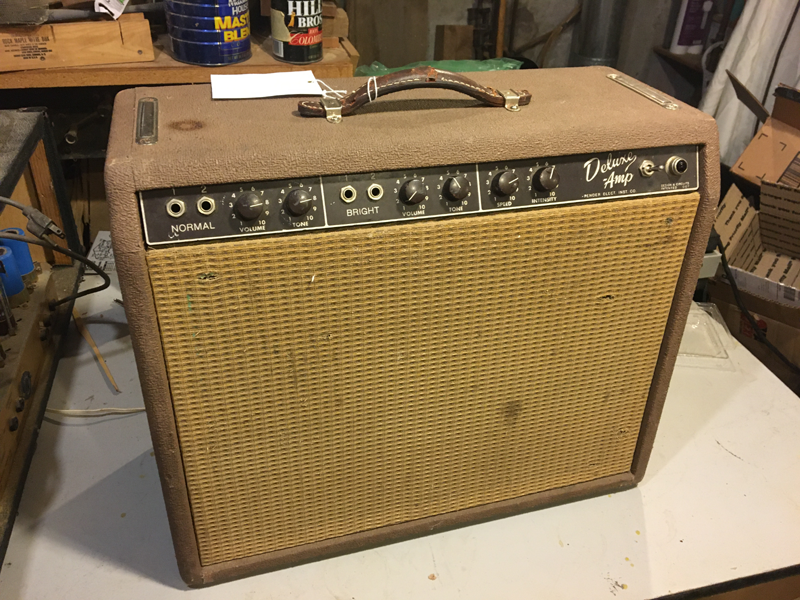
Fender Deluxe - Front
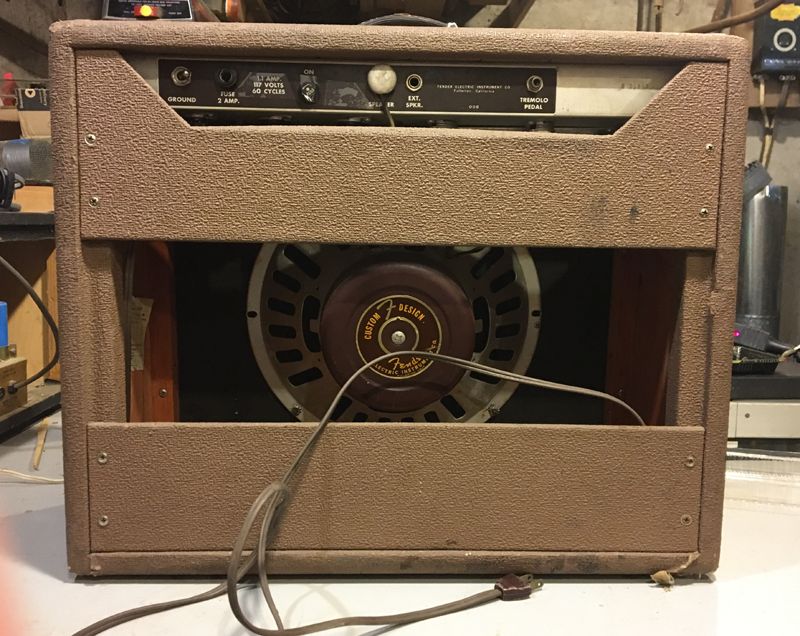
Fender Deluxe - Back
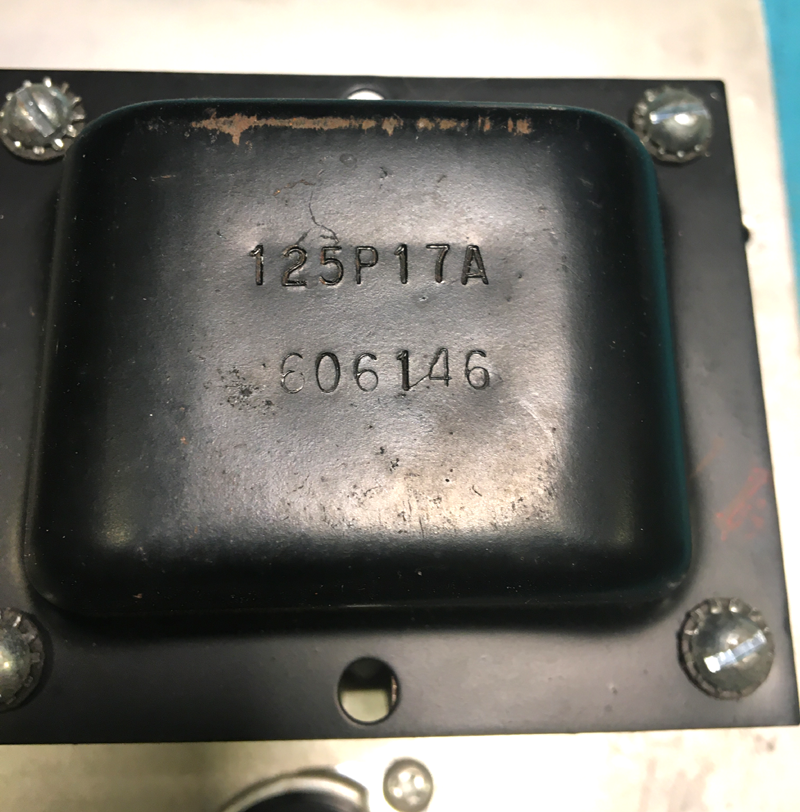
Power Transformer Code, Indicating 1961
The customer had inherited this, along with a Gibson GA-8 'Gibsonette' from roughly the same vintage, and asked me to check them out. Both looked to be in pretty decent shape, other than both having a two prong, non-polarized, power cable. We first checked the tubes on the Deluxe, and they were functional, but showing signs of getting weak, with some grid leakage. We left them in for the initial test. The amp actually powered up and sounded reasonably healthy. The pilot light wasn't working, but turned out it just didn't have a bulb installed.
We pulled the chassis to take a look, and it also looked to be in good shape. Everything looked to be original, with no obvious repairs or mods. While the chassis was out, we swapped out the old 2 prong power cord with a 3 prong grounded power cable. This mod also eliminates the need for a 'ground' switch, and the associated cap that ties one leg of the old 2 prong power cable to ground (sometimes refered to as the 'death cap').
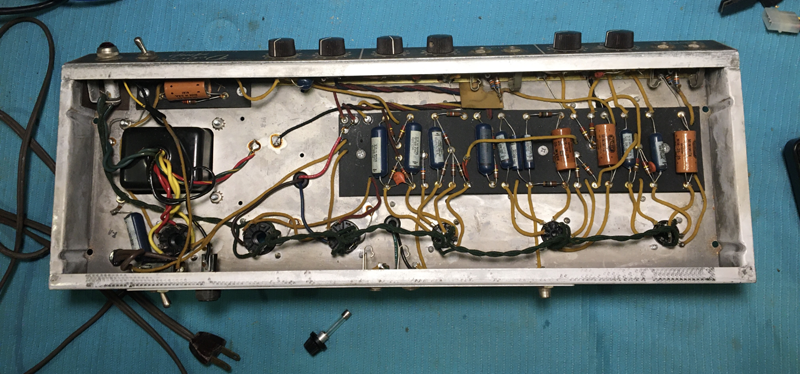
Fender Deluxe - Chassis
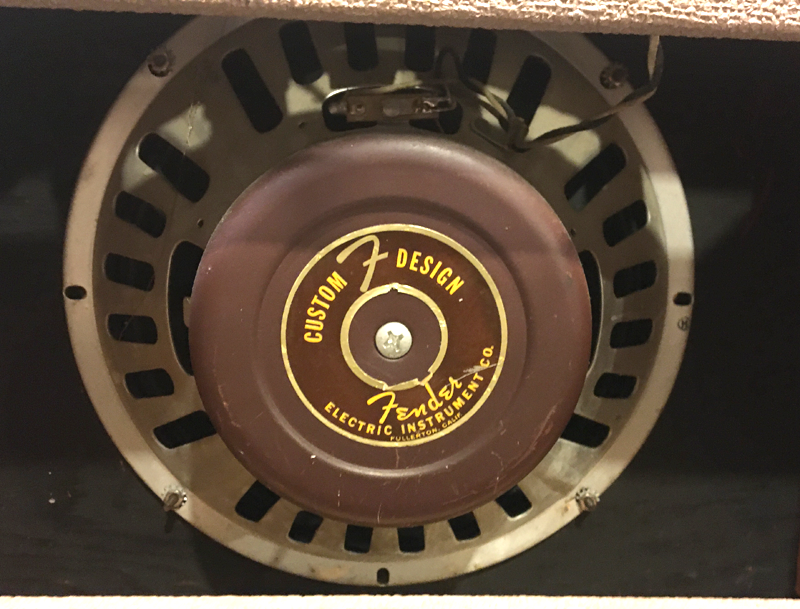
Fender Deluxe - Original Speaker
While the chassis was out of the cab, we cleaned the Tolex up with some mild soap and water and a good scrub brush, and then gave it a light coat of Armorall. We also removed the knobs from the chassis, and cleaned them and the chassis face. Once everything was fairly clean, we reassembled the chassis into the cab, and replaced the tubes with a new set of JJs. This amp may need to have the power supply filter caps replaced down the road, but it is quite quiet so far, so we left them alone for now (see update below). This little amp sounds great!
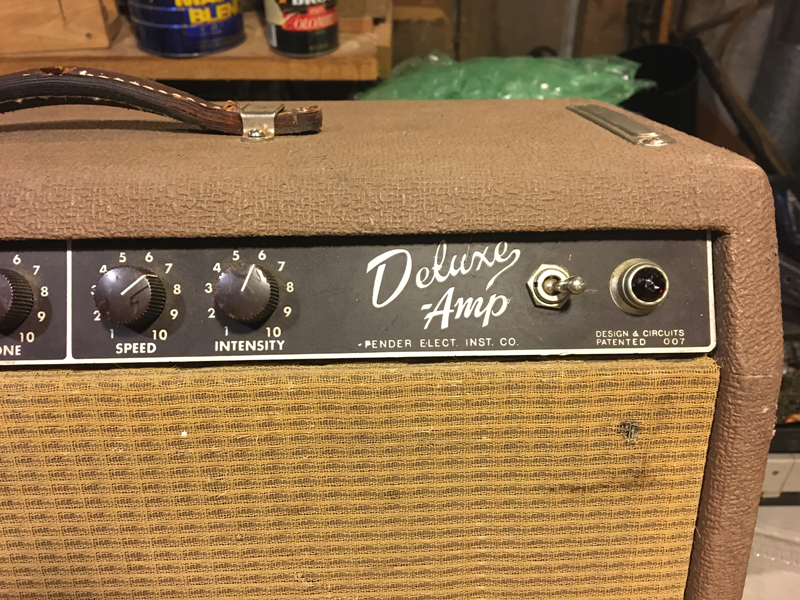
Fender Deluxe - Panel
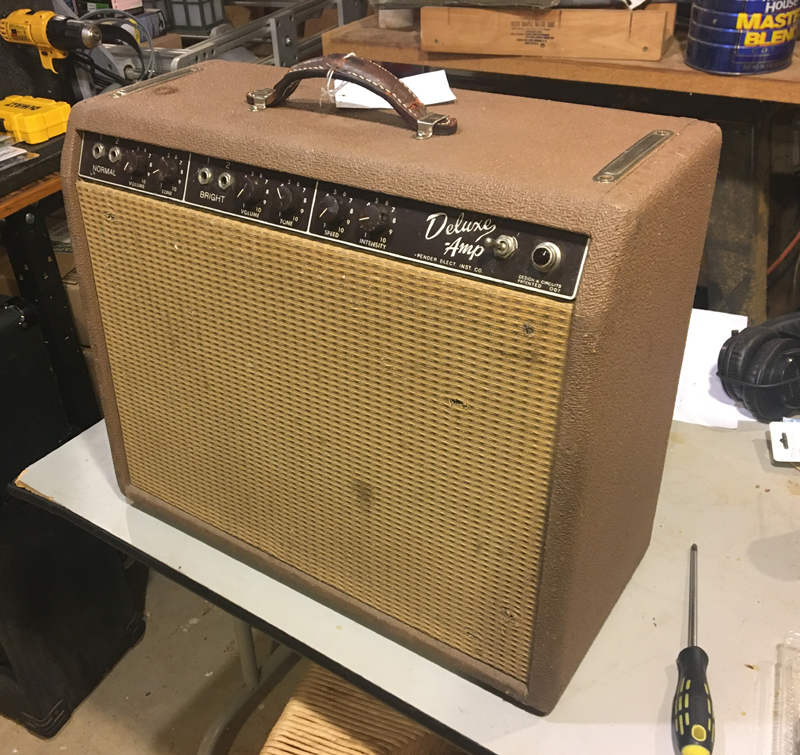
Fender Deluxe - Front, Cleaned Up a Bit
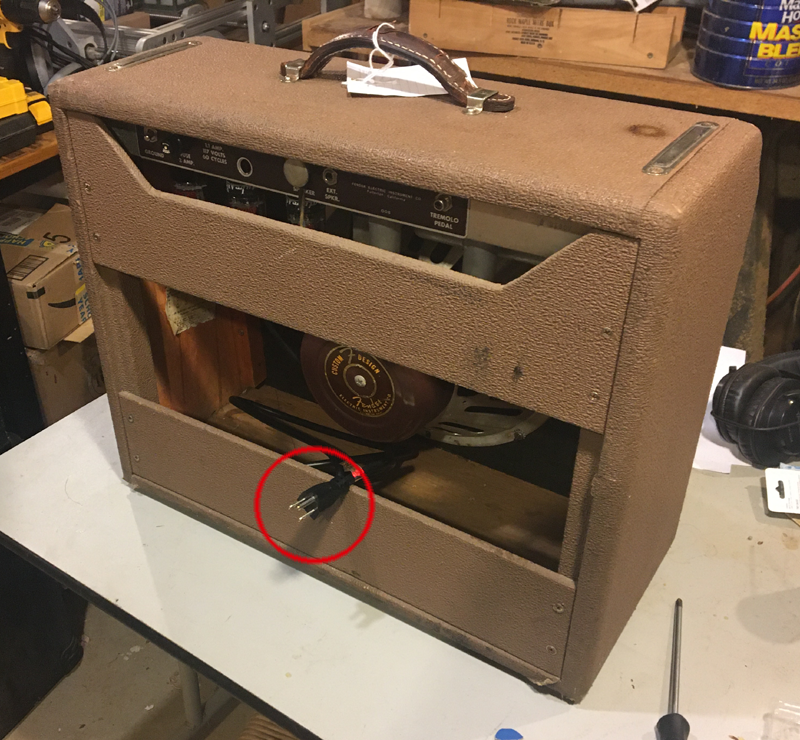
Fender Deluxe - Back, Cleaned Up - Showing 3-prong Power Cable
UPDATE Sept 2021: Sure enough, a little over a year later, this amp came back in. It had gotten noisy, with a pretty pronounced low 60 cycle hum. Several of the power supply electrolytic filter caps had, indeed, failed. Replaced the 4 main power supply caps, the bias circuit filter cap, as well as several cathode bypass caps, which were also original electrolytics. Basically, once some electrolytic caps start to fail, it is a good idea to pretty much replace them all.
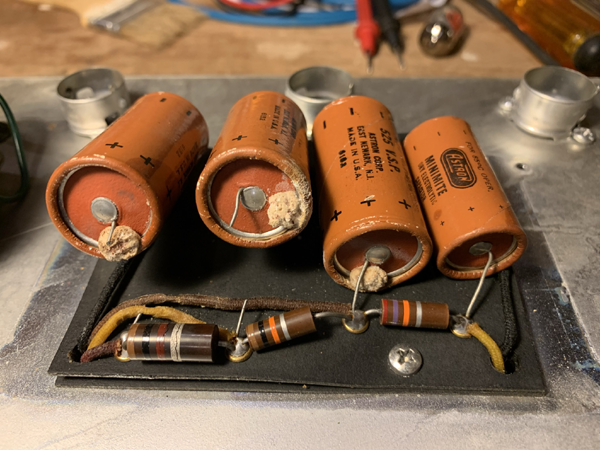
Fender Deluxe - Starting to remove failed filter capacitors
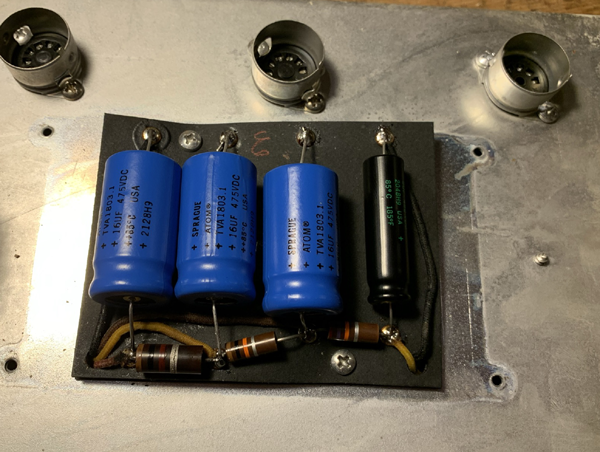
Fender Deluxe - New filter capacitors
This is one of the ongoing decision dilemmas when working on older amps. Fix just what is actually broken, or also try to dig deeper and replace parts that are still working, but may (probably will) fail down the road. It depends a bit on what the amp is going to be used for. If this had been a primary gigging amp, we probably would have considering replacing these the first time it came into the shop, given its age. However, that was not the case at the time, and we were trying to keep the initial repair bill at a resonable level. This repair involved around $80 worth of parts.
